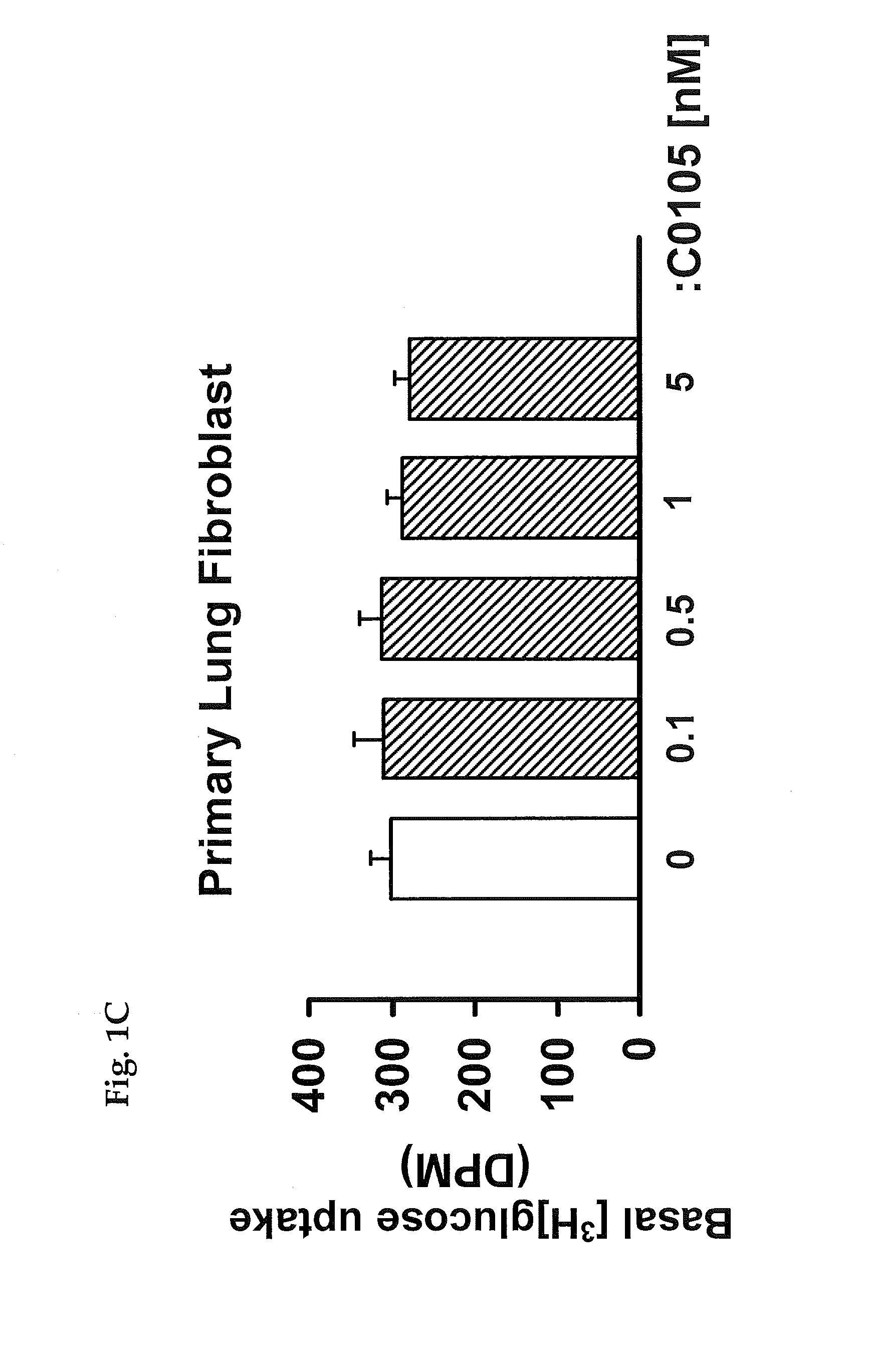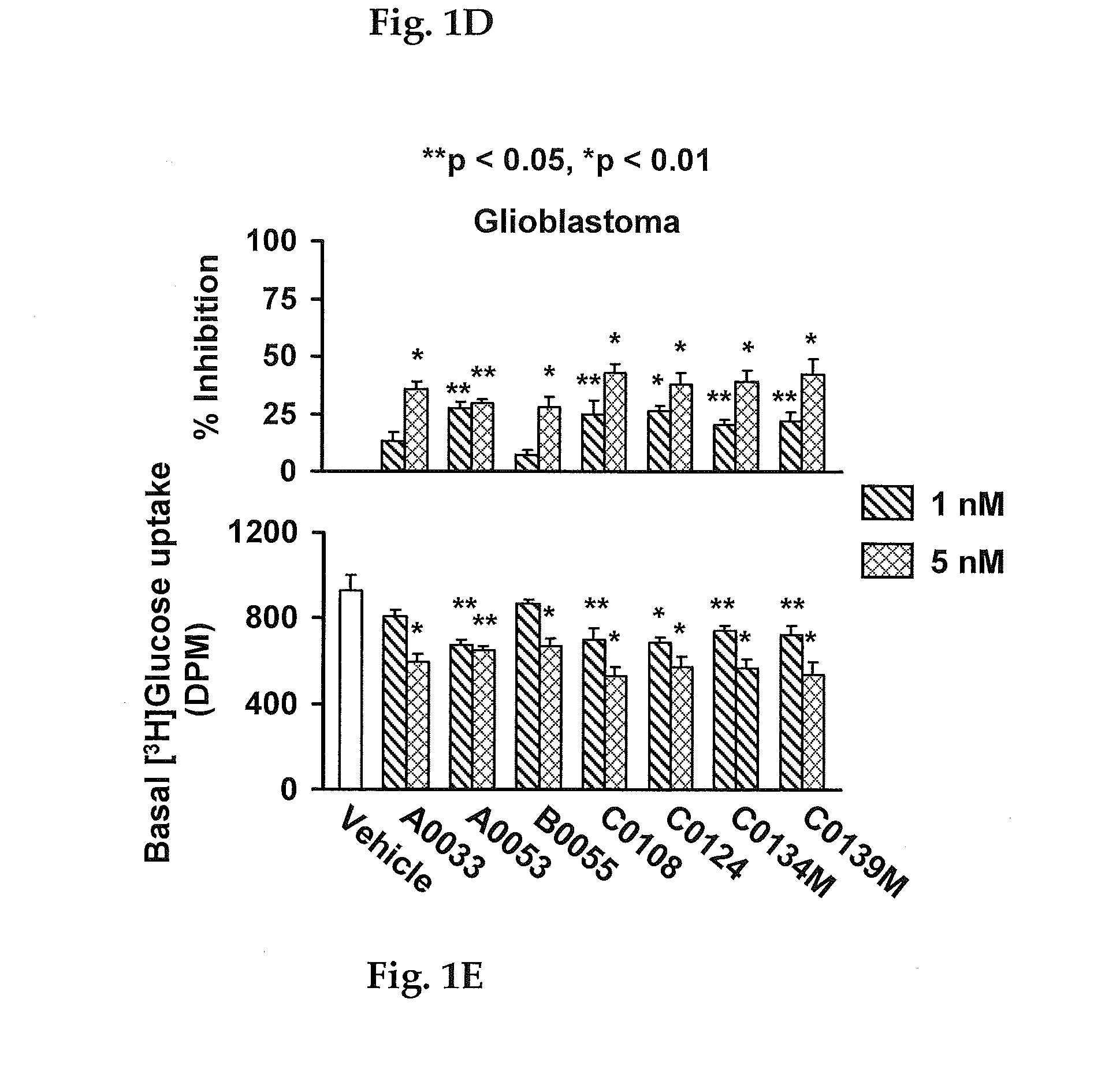Method for inhibiting growth of cancer cells
a cancer cell and growth inhibition technology, applied in the direction of biocide, heterocyclic compound active ingredients, drug compositions, etc., can solve the problems of tumor growth, spectrum disorders, and the inability of the pten gene to make a protein that does not function properly or does not work at all, so as to inhibit the progression of cancerous state
- Summary
- Abstract
- Description
- Claims
- Application Information
AI Technical Summary
Benefits of technology
Problems solved by technology
Method used
Image
Examples
example 1
FITC-NLX-Based FLNA Screening Assay
[0542]A. Streptavidin-Coated 96-Well Plates
[0543]Streptavidin-coated 96-well plates (Reacti-Bind™ NeutrAvidin™ High binding capacity coated 96-well plate, Pierce-ENDOGEN) are washed three times with 200 of 50 mM Tris HCl, pH 7.4 according to the manufacturer's recommendation.
[0544]B. N-Biotinylated VAKGL Pentapeptide (Bn-VAKGL) (SEQ ID NO: 1)
[0545]Bn-VAKGL (SEQ ID NO: 1) peptide (0.5 mg / plate) is dissolved in 50 μl DMSO and then added to 4450 μl of 50 mM Tris HCl, pH 7.4, containing 100 mM NaCl and protease inhibitors (binding medium) as well as 500 μl superblock in PBS (Pierce-ENDOGEN) [final concentration for DMSO: 1%].
[0546]C. Coupling of Bn-VAKGL Peptides to Streptavidin-Coated Plate
[0547]The washed streptavidin-coated plates are contacted with 5 μg / well of Bn-VAKGL (100 μl) for 1 hour (incubated) with constant shaking at 25° C. [50 μl of Bn-VAKGL peptide solution from B+50 μl binding medium, final concentration for DMSO: 0.5%]. At the end of t...
example 2
MOR Agonist Activity Using
[0563]GTPγS Binding Assay
[0564]To assess the mu opiate receptor (MOR) agonist activity of positive compounds from the FLNA screening, compounds were tested in a [35S]GTPγS binding assay using striatal membranes. A previous study has shown that in striatal membranes, activation of MOR leads to an increase in [35S]GTPγS binding to Gao (Wang et al., 2005 Neuroscience 135:247-261). This assay measures a functional consequence of receptor occupancy at one of the earliest receptor-mediated events. The assay permits traditional pharmacological parameters of potency, efficacy and antagonist affinity, with the advantage that agonist measures are not subjected to amplification or other modulation that may occur when analyzing parameters further downstream of the receptor.
[0565]Thus, striatal tissue was homogenized in 10 volumes of ice cold 25 mM HEPES buffer, pH 7.4, which contained 1 mM EGTA, 100 mM sucrose, 50 μg / ml leupeptin, 0.04 mM PMSF, 2 μg / ml soybean trypsin ...
PUM
| Property | Measurement | Unit |
|---|---|---|
| pH | aaaaa | aaaaa |
| volume | aaaaa | aaaaa |
| shrinkage | aaaaa | aaaaa |
Abstract
Description
Claims
Application Information
 Login to View More
Login to View More - R&D
- Intellectual Property
- Life Sciences
- Materials
- Tech Scout
- Unparalleled Data Quality
- Higher Quality Content
- 60% Fewer Hallucinations
Browse by: Latest US Patents, China's latest patents, Technical Efficacy Thesaurus, Application Domain, Technology Topic, Popular Technical Reports.
© 2025 PatSnap. All rights reserved.Legal|Privacy policy|Modern Slavery Act Transparency Statement|Sitemap|About US| Contact US: help@patsnap.com



